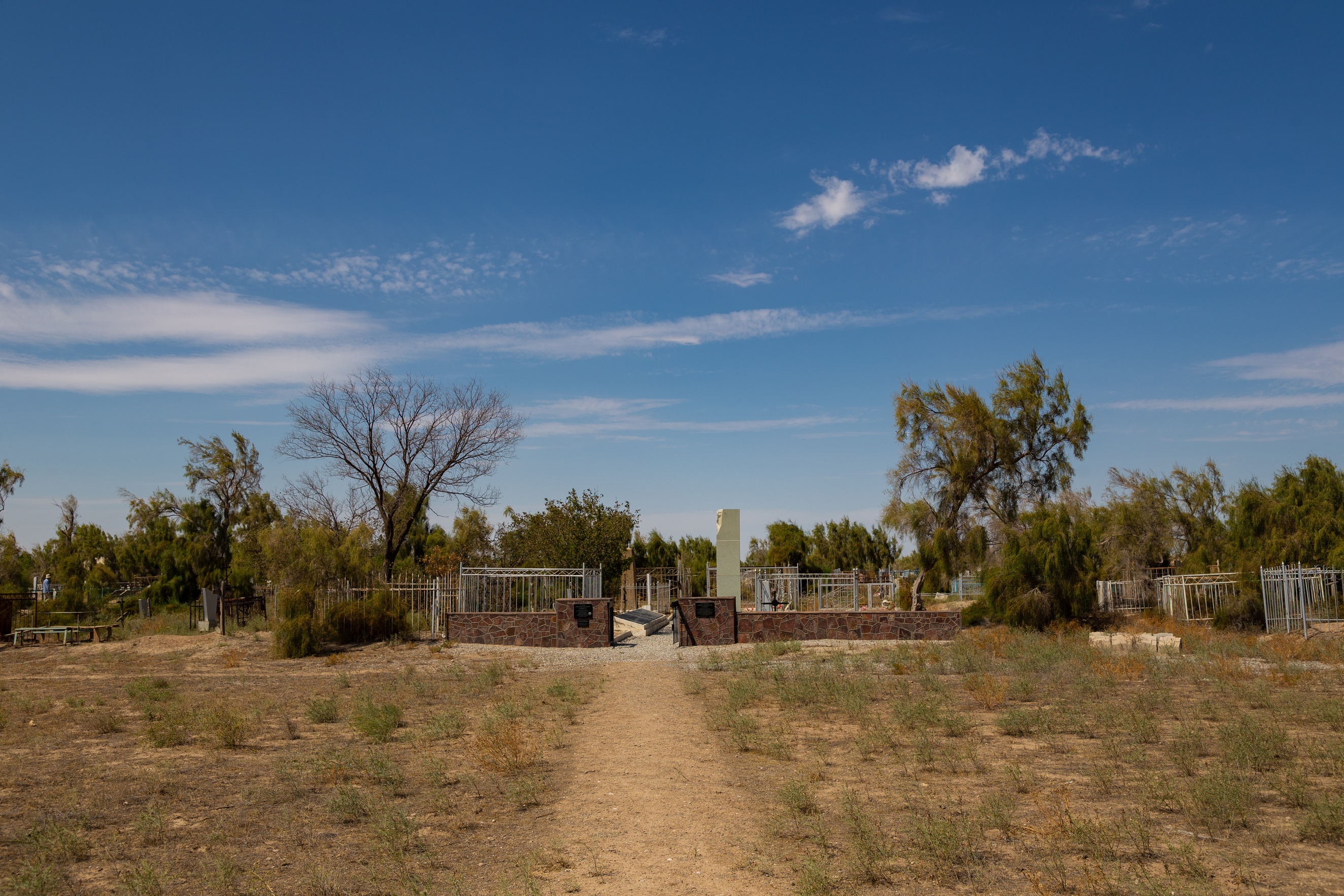
Memory
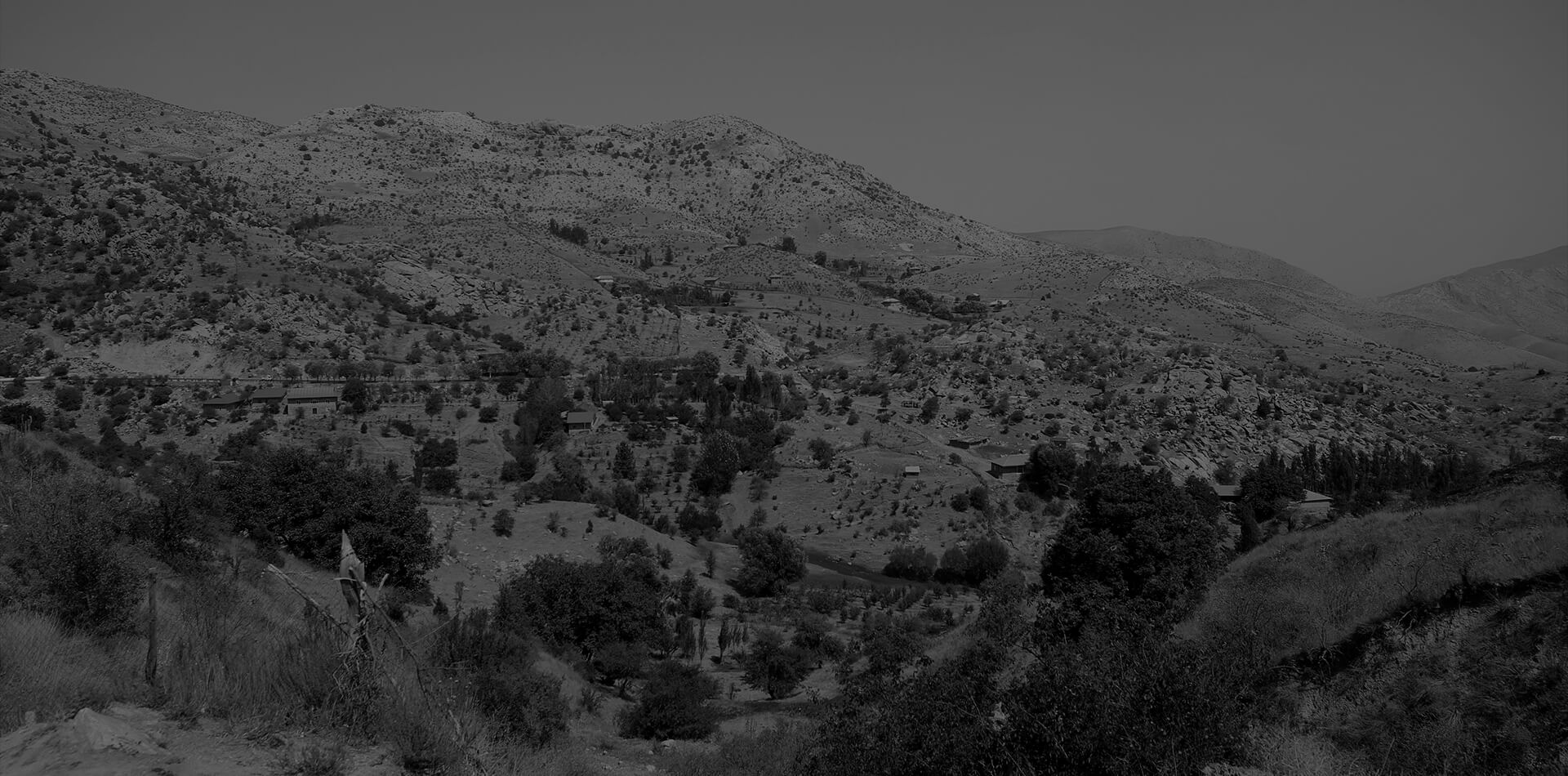


Uzbekistan consists of both plains and mountains. The mountains divide the plains and to get from one to another, it is necessary to overcome passes that often separate two worlds.
Climbing high hills today, on asphalt roads, is not a problem, only if it is not winter but summer. It was different when people were traversed on foot or by horse-drawn carriage.
A good example is the Chatkala Mountains, which separates the main part of Uzbekistan from the Fergana Valley, which is the richest in fertile lands. Surrounded by mountains on all sides, it was once considered a paradise in this part of the world: fertile land, high mountains ensuring the safety of its citizens.
The Uzbeks are usually very friendly and social. They invite guests over to their home straight away. This stems not only from their openness and hospitality, but also the fact that residential buildings are surrounded by a tall, gated fence. Its splendour depends on one’s wealth and is a first indicator of one’s socio-economic status. Drinking sweet tea at home - or, preferably, in a shaded courtyard, is a must. Grapevines towering by every building - both on the streets and in the gardens - are yet another symbol of wealth. They fulfill a dual purpose. On the one hand, they give fruits from which raisins can be produced. On the other hand, their leaves guarantee much needed shade in the scorching heat. scorching heat. The beginning of September is harvest time – during that time they are the tastiest. Just a short, friendly conversation with a stranger on the street is enough to immediately receive a bunch of grapes. By plucking fruits, sitting in the shade, you can engage in conversation.

For a long time, General Anders insisted that the Soviet authorities transfer Polish divisions to territories with a friendlier climate, but only the visit of Prime Minister Władysław Sikorski with Joseph Stalin brought results. Soldiers were placed in Central Asian Soviet republics, mostly in Uzbekistan. The Fergana Valley was one of these spots - in 1942 Tashlak and Magielan became homes to 9 Infantry Division. After this period of time, Polish military cemeteries remained there.
Some were sent south, beyond Zarafshan Range. On this occasion, 6 Infantry Division arrived to overcome a picturesque pass that constitutes a symbolic border between north and south of this part of Uzbekistan. The north is dominated by Samarkanda with its monuments, whereas the south is dominated by the Bukhara Emirate.
Zarafshan Range and the Samarkanda Pass is a an area with beautiful views and rock formations. Not only the size of the mountains, but also their beauty impresses people passing by. At the pass, it is necessary to stop and visit a local market with dried fruit, herbs, and local nuts. You can also buy there wild pistachios that are colloquially called “dried”, as - unlike the ones grown on plantations that are later supplied to European stores - they are not supplied with additional water. Wild pistachios are smaller, but their aroma and taste are truly unforgettable. At a roadside bazaar, the smells fill your nostrils and delight. It is impossible to pass by remaining indifferent. Truly oriental. If not an unfinished, contemporary concrete structure resembling something in between a restaurant and an observation tower, you could feel like Polish soldiers overcoming this pass in early 1942.
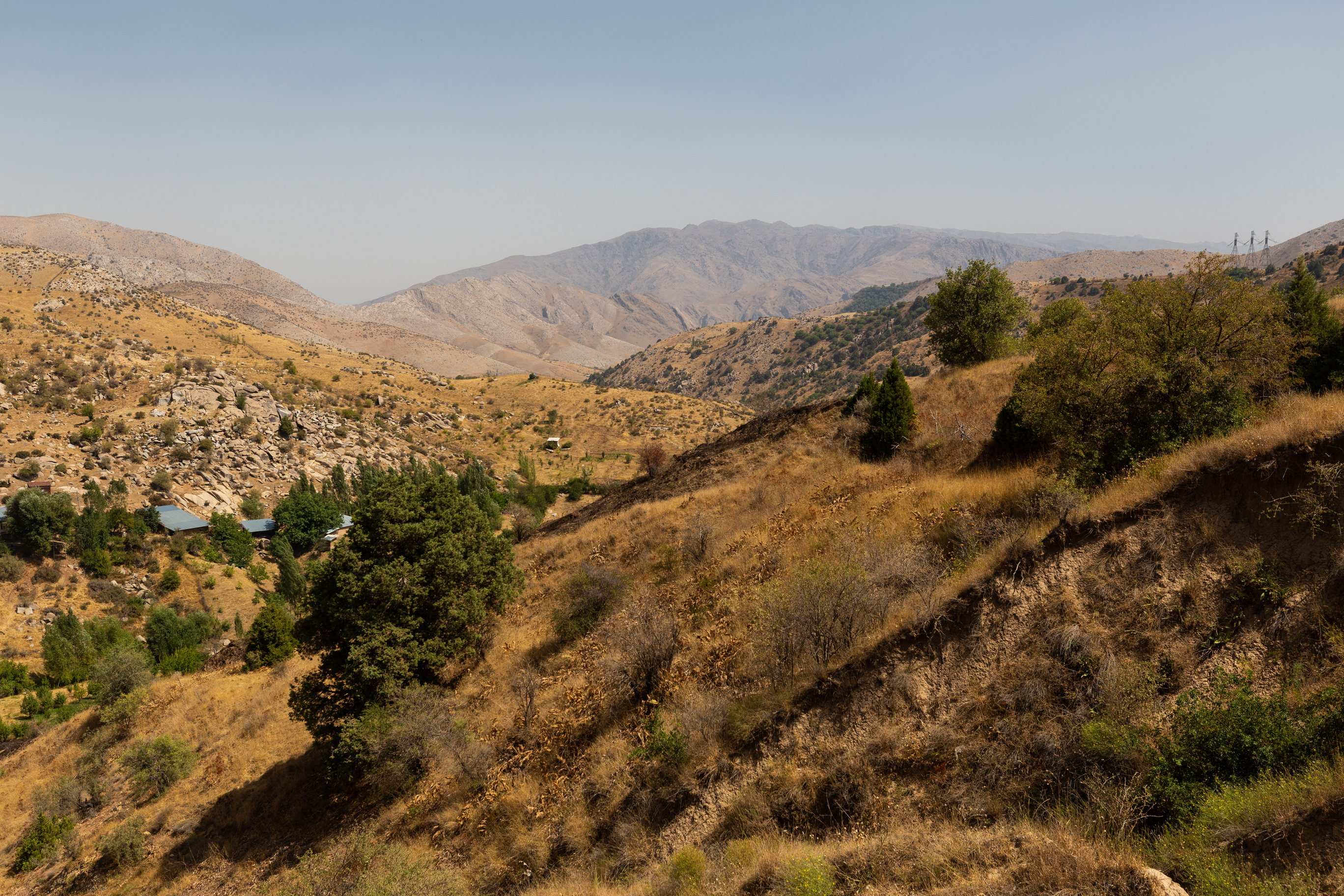
Soldiers of the 6. Infantry Division marched towards one of the most picturesque regions in this part of the world. On the way, they passed mountains that were still covered with snow at this time of year.
In general, the desert dominates this landscape, but wherever water is present, the soil explodes with greenness and life. The might and significance of water is plain for everyone to see. As soon as water is present, the landscape turns into a green oasis.
Today one can drive through this area by car, but one can imagine how camel caravans were once omnipresent instead. Boukhara was one of the most important cities of this part of today’s Uzbekistan. An important route of the famous Silk Road ran through this area. Luxurious goods from the East were transported to the West, from Asia to Europe. Cities and powerful states were formed along the route and benefited from its riches. The meeting of cultures always fostered growth and scientific progress. No wonder therefore that in XII century this part of the world was known to be a scientific centre. This is where an enormous (from India to today’s Turkey) Timur’s (Tamerlan’s) empire spread. During his reign, Timur made efforts to attract numerous artists and scientists. His grandson - Ulug Bega - greatly contributed to the empire’s growth, particularly as far as science is concerned. The march of the Polish army in 1942, full of malnourished, diseased soldiers only recently freed from labour camps, must have been a particularly sombre sight against this background. They had their army uniforms, but continued to carry the burden of Soviet labour camps and miserable living conditions in exile. After being essentially convicted to death by the communist system, they made steps towards regaining their pride and hope for a return to a free homeland.

Soldiers units of the 6. Infantry Division have been placed around towns of Shahrisabz, Kitob, Jakobak and Chiroqchi.
In Sharhisabz, there are remains of an impressive Ak Saray palace. Shahrisabz was also Timur’s hometown and it had great significance for the Silk Road. Today, only two fragments of towers decorated with mosaics and a small part of the palace remain from the times of splendor, but even now they are impressive and give an idea of the historical size of the building designed by the Persian architect Muhammad Yusuf Tebrizi. With the end of Timur's Empire, the city fell into ruin, and subsequent wars only completed the destruction.
In 1942, Klemens Rudnicki described Shahrisabz as follows: “[...] this is a small town, located 90 kilometres southeast of Samarkanda, in the former Boukhara emirate, 5 kilometres away from the final train station of Kitab. It is populated predominantly by Uzbeks and, if translated into Polish, it would bear the name of a ‘town of carrots’. Once, centuries ago, Shachriziabs was the second capital of Tamerlan after Samarkanda. Now it is an ordinary Asian town with Soviet-Russian remnants. It is also partly destroyed so that some districts are to large extent depopulated and abandoned. Houses - as it usually the case in the East - are made of clay, the streets are narrow and winding. The town is surrounded by a tall fortification made of clay that brings memories of the glorious past. In some places grapevines blend together with morus plants. When walking the streets, one may stumble into a charming corner with ruins of a miniature mosque with mesh columns and a soaring minaret. In the very centre of town one can find ruins of the impressive Tamerlan caste. Light-blue tiles decorated with gorgeous arabesques cover the tower of the castle. Its size and beauty stun. The charm of the surroundings is amplified by colourful outfits of both men and women, who stroll through the streets.
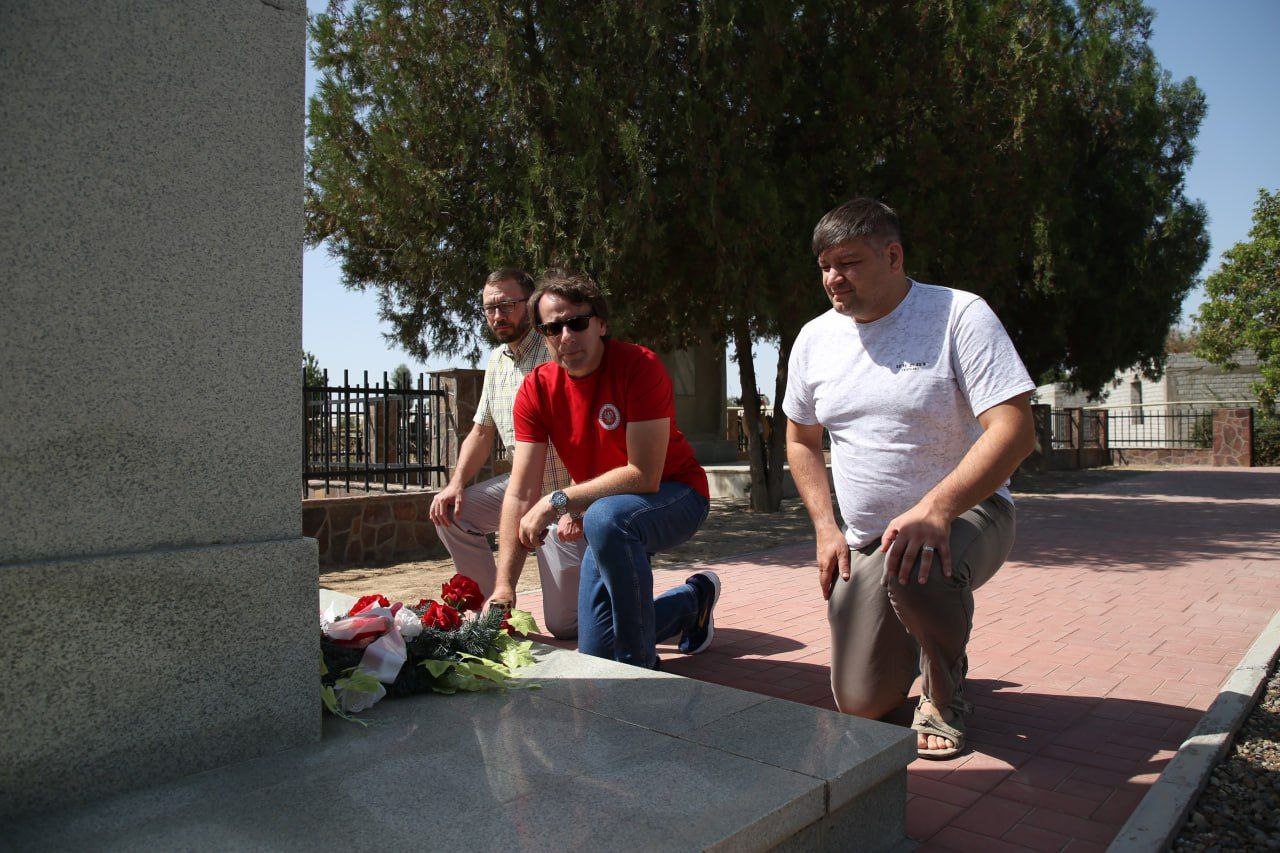
These passers-by create an entirely different world. An Asian one, difficult for European to infiltrate. A lot of time was needed to understand how aware and proud of their wonderful past they are. [...] Initially, we were taken for Russians and Bolsheviks, so it is no surprise the welcome was rather cold. Then, when word spread that we are from Lechistan, Uzbek hearts and homes opened for us. Our soldiers formed friendships with men in colourful gabardines and women behind veils. It all started with a legend. There was a prophecy that once Polish trumpets sound from Tamerlan’s old tower, Uzbekistan will regain its freedom. And so it happened - even though none of us knew of the prophecy - that as of the second day after arriving in Shachriziabs, the trumpeter climbed 150 stairs up the tower twice a day to play St. Mary’s Trumpet Call. The same one that is associated with a legend of a Tamerlan’s rider from centuries ago. Initially, Uzbeks were taken aback by this strange music and kept silent, filled with distrust. They looked at us, and once they learned of the legend, the friendship started. It cannot even be ruled out, that some of the Uzbeks followed this friendship and awaken hopes somewhere beyond Kolyma’ (Klemens Rudnicki, on the
Polish trail. Memories from 1939-1947, London 1983, p. 187-188).
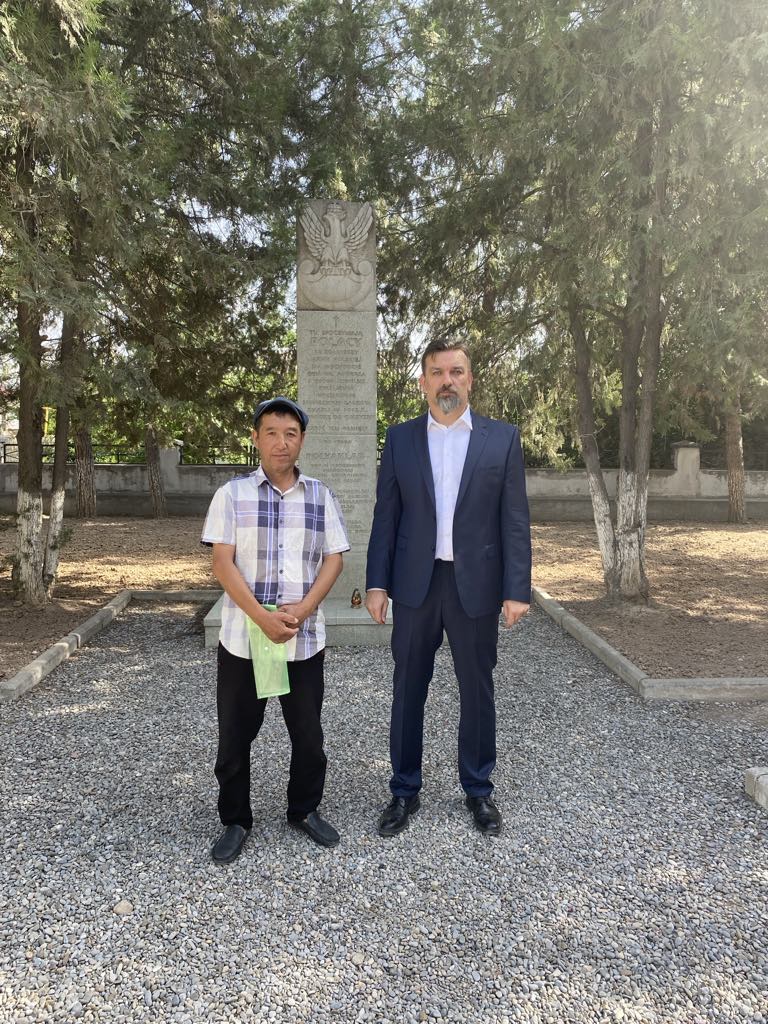
Polish soldiers arriving to Uzbekistan were usually exhausted. Taken from freezing steppes, they explored a culturally and historically rich region that was completely unknown to them.
Further, they had to face unfamiliar climate conditions. What initially seemed like salvation - warmth and sun - quickly turned into a curse for exhausted bodies. Klemens Rudnicki recalled that his regiment was placed “nearby the Kashka-Daria river, 10 kilometres away from the town of Kitab. Only the regiment’s command and the infirmary were placed in wooden buildings of “vinzavod”, a winery. Trees and shade were scarce, tents were set up in scorching heat, and the proximity of the river as well as abundant “ariki” (irrigation ditches) soon proved to be the garrison’s curse and a breeding ground for malaric anopheles.” (Klemens Rudnicki, op. cit., p. 188-189). Similar stories from the 6. Infantry Division were described by Jerzy Stypułkowski. He claimed that troops initially experienced bloody diarrhoea, followed by typhus [...]. The first to die in my squadron was young, talented, promising officer cadet Światowiec.
Soon after a catholic cemetery appeared on this Uzbek outback. People started coming in. Former soldiers, now starving beggars, checked in with the command. One of them came later on. No one knows where he came from and what he went through. He mustered enough strength to come up three steps of stairs before passing away. He met the end of his journey!” (Jerzy Stypułkowski, Loyal to the oath. Tragedy of the Anders Army’s troops, Warsaw 2016, p. 181).
Polish soldiers spent a few months in the exotic climate, surrounded by historical buildings. In 1942 they were evacuated from the Soviet Union to Persia (Iran).
A significant number of soldiers did not survive long enough for this moment, so they stayed in Uzbekistan forever. They rest on one of the 17 Polish cemeteries.

tel.: +48 58 323 75 20
e-mail: sekretariat@muzeum1939.pl

tel.: + 48 85 672 36 01
e-mail: sekretariat@sybir.bialystok.pl

tel.: +998 78 120 86 51
